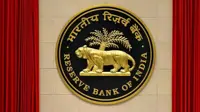Reserve Bank of India has opened an on-tap liquidity window of Rs50,000 crore to help banks provide immediate liquidity for ramping up Covid-related healthcare infrastructure and services in the country. The new on-tap liquidity window will be used to extend loans to banks with tenors of up to three years at the repo rate till 31 March 2022.

Under the scheme, banks can provide fresh lending support to a wide range of entities, including vaccine manufactures, importers/suppliers of vaccines and priority medical devices, hospitals/dispensaries, pathology labs, manufactures and suppliers of oxygen and ventilators, importers of vaccines and Covid-related drugs, logistics firms and also patients for treatment.
Such lending by banks has been brought under priority sector lending in order to incentivise quick delivery of credit. These loans will continue to be classified under priority sector till repayment or maturity, whichever is earlier. Banks may deliver these loans to borrowers directly or through intermediary financial entities regulated by the RBI.
Banks are expected to create a Covid loan book under the scheme. By way of an additional incentive, such banks will be eligible to park their surplus liquidity up to the size of the Covid loan book with the RBI under the reverse repo window at a rate which is 25 bps lower than the repo rate or, 40 bps higher than the reverse repo rate, RBI stated in a release.
Priority sector lending
Also, to provide further support to small business units, micro and small industries, and other unorganised sector entities adversely affected during the current wave of the pandemic, RBI announced special three-year long-term repo operations (SLTRO) of Rs10,000 crore at repo rate for the small finance banks (SFBs). This facility, which will be available till 31 October 2021, will be deployed for fresh lending of up to Rs10 lakh per borrower.
Small finance banks (SFBs) have been playing a prominent role by acting as a conduit for last mile supply of credit to individuals and small businesses. Lending by SFBs to MFIs for on-lending will also be classified as priority sector lending.
At present, lending by SFBs to micro-finance institutions (MFIs) for on-lending is not reckoned for priority sector lending (PSL) classification. In view of the fresh challenges brought on by the pandemic and to address the emergent liquidity position of smaller MFIs, SFBs are now being permitted to reckon fresh lending to smaller MFIs (with asset size of up to Rs500 crore) for on-lending to individual borrowers as priority sector lending. This facility will be available up to 31 March 2022.
RBI also extended the permission for scheduled commercial banks to deduct credit disbursed to new MSME borrowers from their net demand and time liabilities (NDTL) for calculation of the cash reserve ratio (CRR) with a view to incentivise credit flow to the micro, small, and medium enterprise (MSME) borrowers. This exemption, currently available for exposures up to Rs25 lakh and for credit disbursed up to the fortnight ending 1 October 2021 is being extended till 31 December 2021.
RBI noted that the resurgence of Coid-19 pandemic in India in recent weeks and the associated containment measures adopted at local/regional levels have created new uncertainties and impacted the nascent economic revival that was taking shape. This has hurt individual borrowers, small businesses and MSMEs the most.
In order to ease the pain of these groups of borrowers, RBI also announced a new set of measures.
Under this, individuals and small businesses and MSMEs having aggregate loan exposure of up to Rs25 crore and who have not availed restructuring under any of the earlier restructuring frameworks (including under the Resolution Framework 1.0 dated 6 August 2020), and who were classified as ‘Standard’ as on 31 March 2021 shall be eligible to be considered under Resolution Framework 2.0. Restructuring under the proposed framework may be invoked up to 30 September 2021 and shall have to be implemented within 90 days after invocation.
In respect of individual borrowers and small businesses who have availed restructuring of their loans under Resolution Framework 1.0, where the resolution plan permitted moratorium of less than two years, lending institutions are being permitted to use this window to modify such plans to the extent of increasing the period of moratorium and/or extending the residual tenor up to a total of 2 years.
In respect of small businesses and MSMEs restructured earlier, lending institutions are also being permitted as a one-time measure, to review the working capital sanctioned limits, based on a reassessment of the working capital cycle, margins, etc.
Easier KYC norms
RBI also extended the scope of video KYC known as V-CIP (video-based customer identification process) for new categories of customers such as proprietorship firms, authorised signatories and beneficial owners of legal entities and for periodic updation of KYC.
RBI also made conversion of limited KYC accounts opened on the basis of Aadhaar e-KYC authentication in non-face-to-face mode fully KYC-compliant and enabled the use of KYC identifier of Centralised KYC Registry (CKYCR) for V-CIP and submission of electronic documents (including identity documents issued through DigiLocker) as identify proof. Besides, RBI announced the introduction of more customer-friendly options, including the use of digital channels for the purpose of periodic updation of KYC details of customers.
Further, keeping in view the Covid related restrictions in various parts of the country, RBI has advised regulated entities not to take punitive restriction on operations of customer account(s) where periodic KYC updating is due/pending, till 31 December 2021, unless warranted due to any other reason or under instructions of any regulator/enforcement agency/court of law, etc.
At the same time, RBI has asked account holders to update their KYC during this period so far as possible.
In order to mitigate the pandemic related stress on banks and as a measure to enable capital conservation, RBI has allowed banks to utilise 100 per cent of floating provisions/countercyclical provisioning buffer held by them as on 31 December 2020 for making specific provisions for non-performing assets with prior approval of their boards. Such utilisation has noe been permitted with immediate effect and up to 31 March 2022.
Announcing the measures, RBI governor said, the focus should be on a post pandemic future of strong and sustainable growth with macroeconomic and financial stability even as we address the challenges posed by the current wave of the pandemic and remaining on guard against future waves.

.webp)







.webp)
























